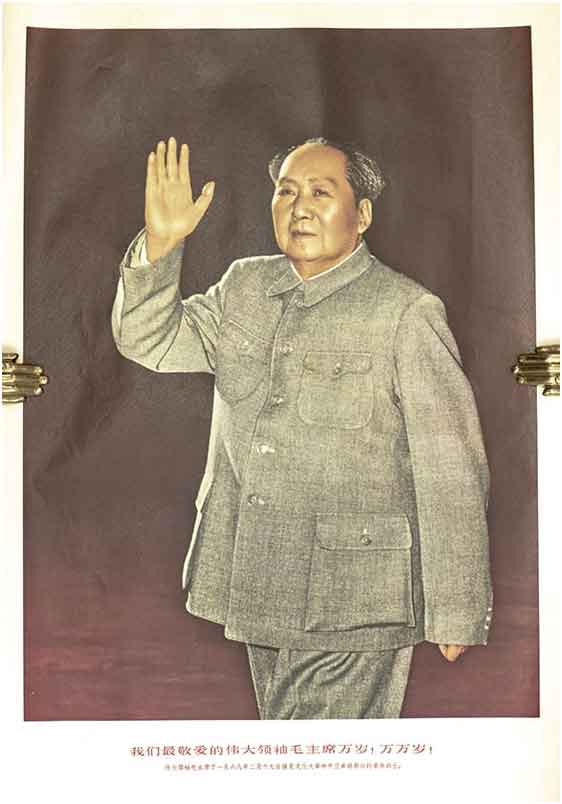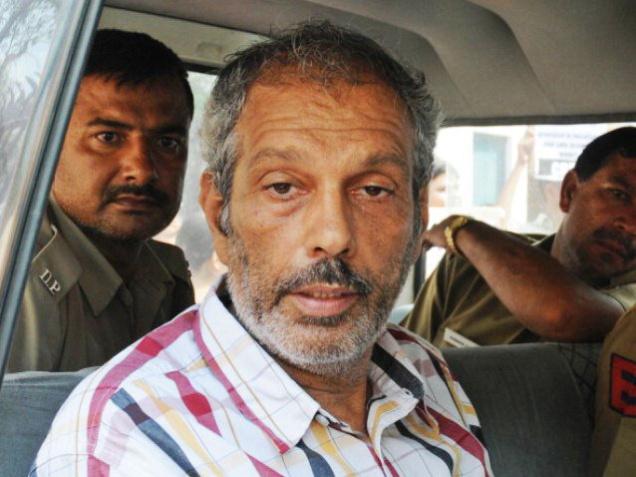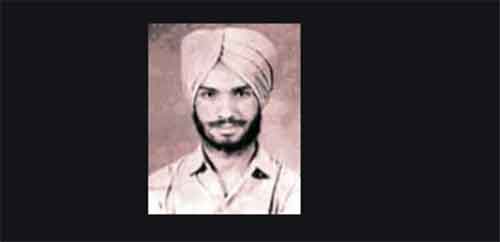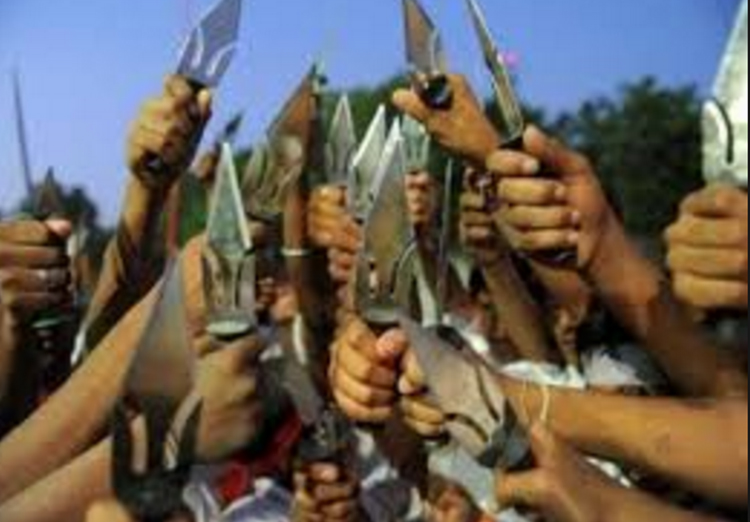Or How Critical Thinking Is Deleted in “The Decade That Cannot Be Deleted”
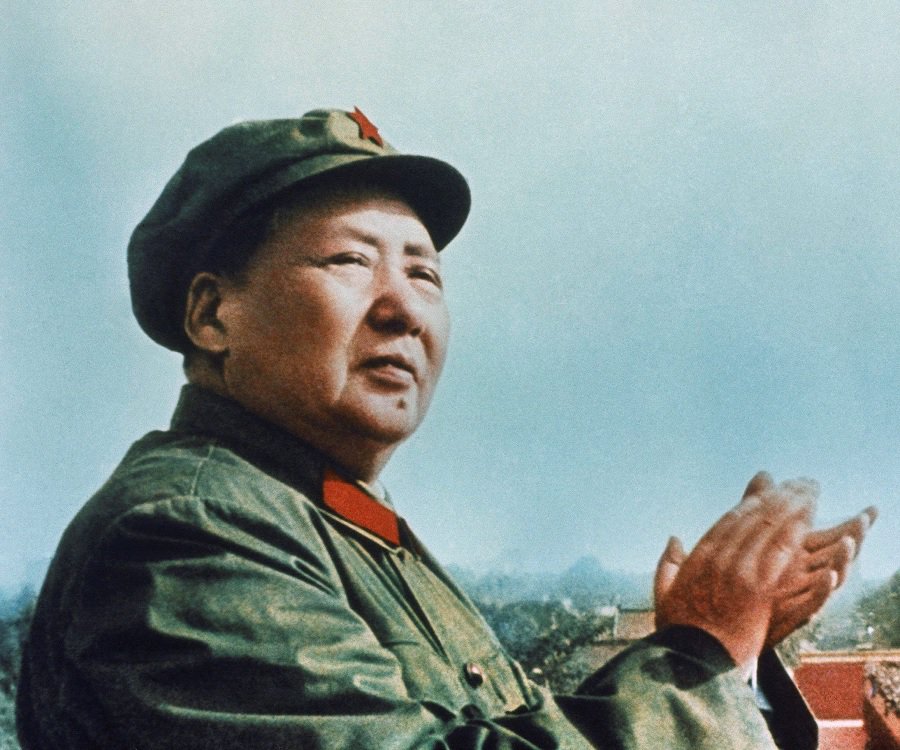
The May 19 print edition of the New York Times featured an opinion piece by Pamela Paul titled “The Decade That Cannot Be Deleted.” It is a vicious and uninformed takedown of the Cultural Revolution that was initiated and led by Mao Zedong in 1966—and that lasted until 1976, when a new exploiting class overthrew socialism.
Paul repeats standard-issue lies and distortions about the Cultural Revolution: that “intellectuals were tortured,” that Mao “sought to purge Chinese society of all remaining non-communist elements,” that this was “political trauma” writ large in which “comrade turned on comrade, friend upon friend, husband upon wife, and child upon parent.” She cites figures (with no substantiation) that “1.6 million to two million deaths” resulted from what she describes as “the horrors of Maoism.”
These kinds of misrepresentations, blatant disregard of the actual policies and leadership-guidance of the Cultural Revolution, and sensationalist accounts of “mob terror” are deconstructed and refuted in materials available on the Setting the Record Straight on the Russian and Chinese Revolutions resource page, now at revcom.us. Overall analysis of the Cultural Revolution can be found in the writings of the revolutionary leader Bob Avakian, especially “The Cultural Revolution in China…Art and Culture… Dissent and Ferment…and Carrying Forward the Revolution Toward Communism”; in an extensive interview with me about the history of communist revolution; and there is other important research and work by various authors and scholars about the Cultural Revolution, including by some who took part in it.1
Paul reduces a complex and turbulent decade of epochal struggle, experimentation, and transformation to vengeful violence. It is mind boggling how she elides the most essential question: what was the Cultural Revolution actually about… and what changes did it bring about? It would be as though you wrote an account of the U.S. Civil War and kept it at the level of the scale of disorder, dislocation, and death; rendered it as a needless “tragedy” of “brother-against-brother” in every household and workplace—but said nothing about the fundamental question and conflict underlying this war: slavery and its preservation and expansion, or its abolition.2
- Some Key Markers of a Truly Liberatory Decade… That Pamela Paul Obliterates
Paul traffics in unsubstantiated death tolls, but says nothing about the countless lives saved and enriched by the Cultural Revolution—for instance, by the unprecedented expansion of health services to the countryside, and the creation of the most egalitarian, needs-based, universal health care system in the world. (For the record, Shanghai had a lower infant mortality rate in the early 1970s than did New York City!) You are kept in the dark about the ethos of “serve the people” that guided the management of the economy, that was taken up by people from all walks of life as a criterion for evaluating and, yes, criticizing leadership on all levels.
Nor, reading Paul’s article, would you gain any understanding of how a new revolutionary culture was being created—with ballets and operas that synthesized/hybridized Western and non-Western dance and musical techniques and forms—that told stories not of feudal dynasties but of bringing a new world into being, of women awakened to struggle for liberation. And just to be clear about charges of museum-sacking, while there was intense ideological struggle against old and enslaving customs, traditions, and culture—official state policy was to protect cultural relics.
Were there problems in how intellectuals and professional artists were treated? Yes. Were they persecuted, punished, and killed off as a category? No, this is “tales from the crypt” nonsense. Again, readers can go to sources cited above.
Here is a thought-question to Pamela Paul. Why were the most radical forces of the 1960s and early 1970s in the U.S., like the Black Panther Party and currents within the women’s liberation movement, looking towards, learning from, and popularizing experience and theory of the Cultural Revolution? It was because the Cultural Revolution was the crest of the worldwide rebellion and revolutionary upsurge that shook the foundations of oppressive class society. And Maoist China was undergoing something utterly unprecedented: a galvanic “revolution within a revolution.” It was a source of inspiration and hope to people across the planet aching and struggling for emancipation.
But Pamela Paul skirts this reality and falls back lazily on bourgeois narratives of the Cultural Revolution as “mob terror” instigated by a fanatical Mao. It’s not as if she had to toil away on this thesis. After all, we are ceaselessly bombarded with the message that communism is a “dangerous” and unworkable ideal that can only lead to nightmare. We hear it from ruling classes and from ideologues within academia; the media reinforces it; a veritable cottage industry of highly publicized memoirs of “suffering,” especially by people who lost privilege and station, gives the storyline a “human face” and patina of authenticity.
“The Decade That Cannot Be Deleted” fits neatly into the pervasive, anticommunist narrative. But I must say that it is disappointing that Pamela Paul would produce such an intellectually irresponsible piece. She has been willing to “go against the tide” (to use a Maoist phrase of the Cultural Revolution) taking on character assassination, false accusations, no need-to-substantiate charges leveled against writers like Jeanine Cummins, author of the novel American Dirt… and unfounded assertions of transphobia directed at author J.K. Rowling. She has raised the banner of fact and evidence as opposed to unthinking judgment and censure.
But when it comes to the monumental political-social revolution that was the Cultural Revolution—Pamela Paul tosses critical thinking and rigorous historical analysis out the window. Now in her article, Paul bemoans “the absence of real history” of the Cultural Revolution. But this is a disingenuous call for even more distortion of the Cultural Revolution in the name of historical “reckoning.” So let’s unpack “real history.”
2. What Was the Historical Backdrop and What Were the Actual Aims of the Cultural Revolution?
Yes, that fundamental question ignored by Pamela Paul. The Cultural Revolution led by Mao was guided by his scientific analysis of the complex reality of Chinese society and the real dangers facing socialism at the time.
Mao launched the Cultural Revolution to address a world-historic problem of communist revolution: how to keep a revolution aimed at putting an end to all exploitation and oppression on the road to achieving that goal. And how to do so in ways that enable the masses in their millions to understand and grapple with this problem, to wage new forms of revolutionary struggle under socialism to prevent the restoration of capitalism, and to further revolutionize the institutions of society and people’s thinking and values.
We have to step back further. In 1949, the Chinese revolution, mobilizing millions under Mao’s leadership, came to power. It drove out foreign imperialism and shattered the old oppressive economic and social order marked by despotic landlord rule in the countryside, and corrupt urban capitalism. The revolution established a new socialist state power and economy geared to meeting basic needs. The revolution under Mao’s leadership set out to forge new liberatory institutions, and new cooperative and collective relations among people, to challenge deeply entrenched subordination of women, and carry out other social transformations.
But even as the revolution progressed, China was still, Mao analyzed, a society marked by social inequalities and differences: between the cities and rural areas; between a minority working mainly in the realm of ideas and administration and those mainly involved in laboring activity; between industry and agriculture; between men and women; and so on. There remained differences in income—and money and price were still integral to the functioning of the economy. Such “scars” of class society could not be eliminated overnight, but neither could they simply be “lived with.” These inequalities had to be restricted, reduced, and eventually overcome.
Mao went further. He analyzed how a new privileged class, a new bourgeois capitalist class—whose roots lay in the kinds of inequalities just described—had emerged within the top levels of the Chinese Communist Party and government. This new bourgeoisie was seeking (in the name of a more “efficient” socialism) to put the economy on a profit-based foundation; to put the educational system on an elitist and technocratic footing; to focus resources to the cities, away from the countryside where the great majority of people (peasants) lived at the time.
These “capitalist roaders” had tremendous strength and influence by the early 1960s in the military, in governing, economic, educational, and cultural institutions. They were already implementing such policies in ways they could. By the mid-1960s, they were maneuvering to seize power.
That was the real-world backdrop for the Cultural Revolution. For ten years, Mao led a mass revolution to prevent capitalist restoration. Society was “sprung into the air.” New systems of political governance enabled workers and peasants to take greater responsibility for the direction of society. “Open door” research brought scientists to the countryside to conduct experiments alongside peasants and to share their lives. I already talked about the breakthroughs in culture.
Yet and still, the capitalist roaders amassed the strength to carry out a violent coup in 1976. These forces arrested Mao’s widow, Chiang Ching, who died in prison along with other significant top leaders of the Cultural Revolution, and murdered many others.
The China of today is ruled by a new bourgeois-capitalist class—the very political target of the Cultural Revolution. These capitalist roaders in power systematically restructured China’s socialist economy, turning China into a sweatshop for world capitalism, into a society marked by some of the world’s most extreme inequalities of wealth and income. China is now the second largest home of billionaires. It is the world’s top carbon polluter. China has evolved into a capitalist-imperialist power plundering resources in Africa and elsewhere.
For purposes of legitimacy and stability, this new bourgeois ruling class feels compelled to maintain the Communist Party—now as a repressive force enforcing the dictates of capital and pursuing China’s imperialist interests. And it suppresses the actual history of the Cultural Revolution for the obvious contrasts with what they are doing today.
3. What Were the Methods of the Cultural Revolution?
Yes, another fundamental matter ignored by Paul: the actual methods of the Cultural Revolution. Mao was aiming to prevent the restoration of capitalism—not through purge and murder but by calling on and mobilizing tens and hundreds of millions of workers, peasants, and students to take up a “second revolution” to overthrow these capitalist roaders through political struggle and carry the revolution forward in all spheres of society.
The main forms of struggle of the Cultural Revolution were mass debate (over policy and the direction of society) in public forums, newspapers, and wall posters; mass political mobilization—demonstrations, strikes, political uprisings that led to new and more participatory forms of political power; and mass criticism in public gatherings and assemblies of authorities promoting neo-capitalist policies and programs, as well as administrators, high-ranking professionals, experts, and others who were influenced by a bourgeois-elitist outlook and grown detached from the basic people.
These methods of struggle were clearly spelled out in official and widely publicized documents, including the following guidance: “Where there is debate, it should be conducted by reasoning and not by force.”
Acts of violence and killings did take place during the Cultural Revolution. But here is what the evidence shows:
- This was not the main trend of the Cultural Revolution, and it was not the orientation of Mao.
- When things went in a violent direction, Mao and the revolutionary forces condemned and criticized such trends through statements, directives, editorials, and on-the-ground interventions.
- Much of the violence fanned during the Cultural Revolution was actually instigated by the new capitalist forces, especially for the purpose of discrediting Mao.
Now there were shortcomings and problems, even serious ones, in the larger approach of the Cultural Revolution. In attempting to narrow that great divide between mental and manual labor, in promoting new revolutionary art and cultural activity by peasants and workers—too many constraints were placed on professional artistic and intellectual work. You didn’t have the kind of intellectual-cultural ferment needed in a society on the road to communism. There was not the understanding of the great importance of dissent, including dissent from anti-socialist perspectives. This has been explored deeply in the work of Bob Avakian.3
4. Memory, Nostalgia, and the Fight for Historical Truth
Paul presses her case against the Cultural Revolution by invoking the thematic of the new book Red Memory: The Afterlives of China’s Cultural Revolution by British journalist Tania Branigan. This is the notion that in China people are not allowed to remember, there is an “enforced forgetting” of, the Cultural Revolution. Translation: people are not being sufficiently encouraged and institutionally led to collectively remember in a certain way—that is, to have and embrace the memory of… “the horrors of Maoism.”
Even more disturbing for Branigan and Paul is the problem of mis-remembering, specifically what they view as a dangerous “nostalgia” for the Cultural Revolution. They lament that sections of young people “yearn for its [the Cultural Revolution’s] ‘idealism’ and clarity,” and that “former Red Guards recall the unity and purpose missing in today’s materialist society [in China].”
Pamela Paul goes one step further. She likens this kind of sympathy for and attraction to the Cultural Revolution to Civil War “nostalgia” and “reenactments” in the U.S.—with its “Confederate statues and weddings on Southern plantations.” To which I must politely retort: what universe do you live in? The Cultural Revolution was the continuation of the struggle of the former slaves, serfs, oppressed and exploited for emancipation. It struck, and continues to strike, “horror” among oppressors and ideologues of oppression (and the woefully misinformed).
Paul cites poet-essayist Clint Smith’s work How the Word Is Passed and the role that memory and history can play in making sense of America’s past and present—its legacy of slavery and segregation. And, by analogy, she suggests that that kind of “reckoning” is what’s needed in China with regard to the Cultural Revolution. But, again, she has it all wrong and twists reality!
Is Pamela Paul aware that in April 1968, after the assassination of Martin Luther King, when Black people rose in mighty rebellions, Mao Zedong issued a powerful statement of support? He declared that this righteous rising of Black people was a “clarion call to all the exploited and oppressed people in the United States to fight against the barbarous rule of the monopoly capitalist class,” and “a tremendous aid and inspiration to the struggle of the people throughout the world against U.S. imperialism and to the struggle of the Vietnamese people against U.S. imperialism.” How has that “word been passed” to you?
And here is a further irony. The Reconstruction period of U.S. history in the years 1867-1877 saw radical social transformation: in the participation of the formerly enslaved in political life, in access to economic resources, in the opening up of educational opportunity. But for decades—and not just in historical works reflecting the former Confederate outlook but also in much mainstream historiography—this was depicted as a time of excess, government overreach, vindictive violence, of “carpetbaggers” seeking personal aggrandizement. Very much like the mainstream anti-Cultural Revolution narratives that masquerade as history and contribute to an unquestionable conventional wisdom.
5. A Basic Point of Orientation, and an Invitation
Bob Avakian wrote a short but important essay in 2013 titled “A Question Sharply Posed: Nat Turner or Thomas Jefferson?” It opens this way:
Slave rebellion or slave master? Do you support the oppressed rising up against the oppressive system and seeking a radically different way, even with certain errors and excesses—or do you support the oppressors, and the leaders and guardians of an outmoded oppressive order, who may talk about “inalienable rights” but bring down wanton brutality and very real terror, on masses of people to enforce and perpetuate their system of oppression?
And further in this essay, he poses this question:
Do we need to learn from not only the overwhelmingly positive experience of the communist movement so far, but also its shortcomings, including sometimes serious errors and even excesses? Yes, this is an important part of the new synthesis of communism, and it is crucial to be able to do even better in the new stage of communist revolution.
This applies profoundly to the Cultural Revolution. We must learn from its enormous achievements, indeed rescue the truth of those achievements from distortion, but also learn from its mistakes and excesses. Precisely to do better, on the basis of the new communism developed by Bob Avakian, in making the revolution to free humanity from all oppression in today’s world.
In this spirit, I invite Pamela Paul to come to Revolution Books in Harlem to engage in a serious and open-minded conversation about the real history of the Cultural Revolution.
_______________
FOOTNOTES:
- See, for instance, Mobo Gao, Gao Village: Rural Life in Modern China; Dongping Han, The Unknown Cultural Revolution: Life and Change in a Chinese Village; and Xueping Zhong, et al, Some of Us: Chinese Women Growing Up in the Mao Era.
- Which, in fact, is how that history was taught until very recently in the U.S., not only in the schools but through popular culture, like the film Gone With the Wind (and is again being taught in places like Florida and Texas).
- To take one example, Bob Avakian has written about the “wrong and harmful notion … that truth has a class character—that there’s bourgeois truth and proletarian truth. This even found its way into guiding directives of the Cultural Revolution in China and ran counter to its overwhelmingly positive character as a mass revolutionary struggle being led on a communist basis.” This passage in BREAKTHROUGHS: The Historic Breakthrough by Marx, and the Further Breakthrough with the New Communism, from the section “The Science,” is worth going deeply into, and for the work that Avakian has done on both the epistemology, or theory of knowledge, of the new communism and a different conception of how socialist state power should be exercised, we strongly refer the reader to the Constitution for the New Socialist Republic in North America, which sets out the sweeping vision and concrete blueprint for a socialist society in which dissent and intellectual ferment, and the search for the truth, are fostered on an unprecedented scale, and part of the very fabric of the new socialist society.
***
Raymond Lotta is a political economist who writes on the history of communist revolution, in particular Mao’s Cultural Revolution; imperialist globalization and the parasitism of U.S. imperialism; the environmental crisis and socialist sustainable development; and shifts and faultines in the world imperialist system. He writes regularly for www.revcom.us. Lotta is an advocate for the new communism developed by the revolutionary leader Bob Avakian.

